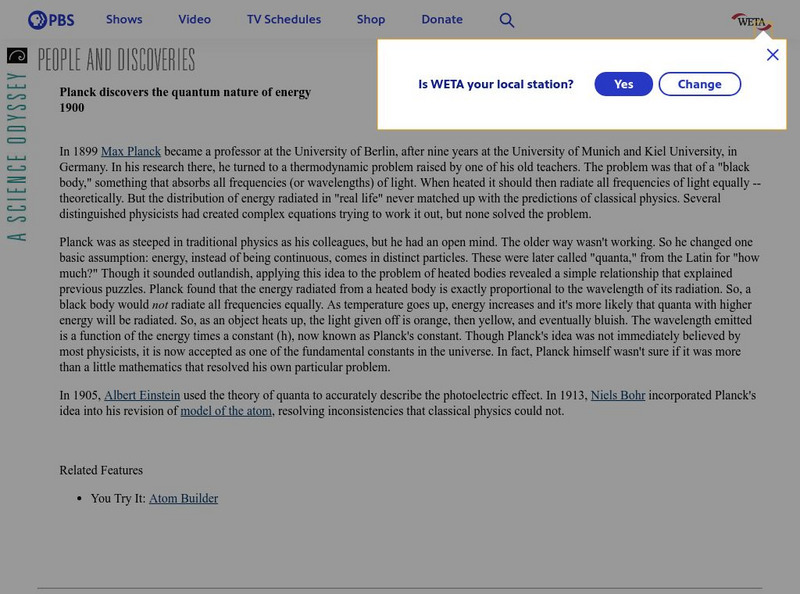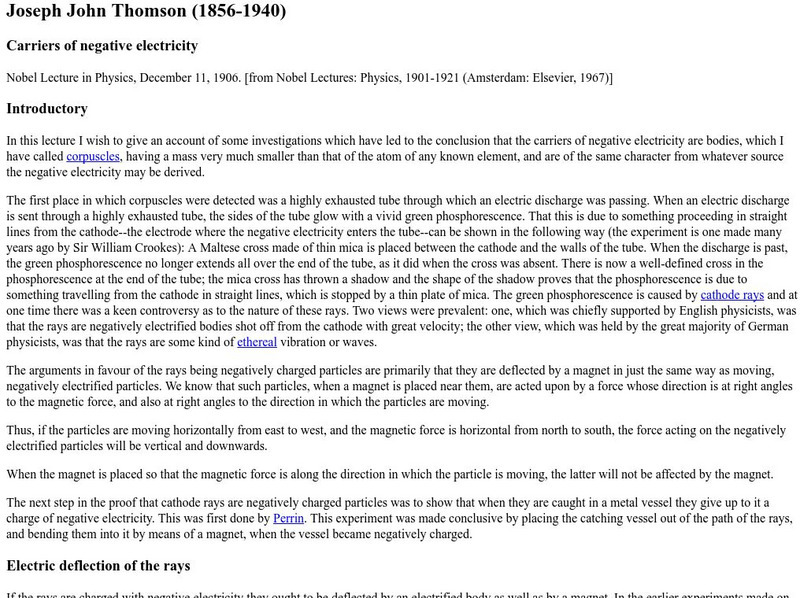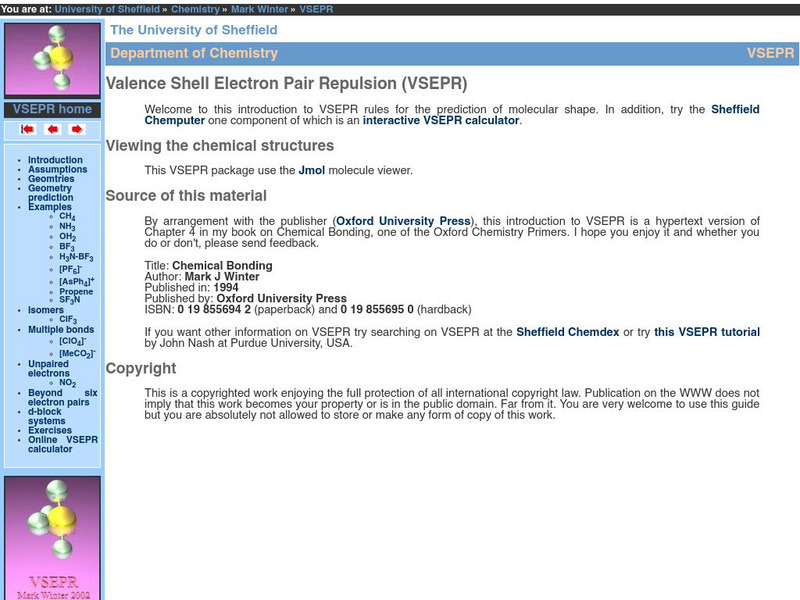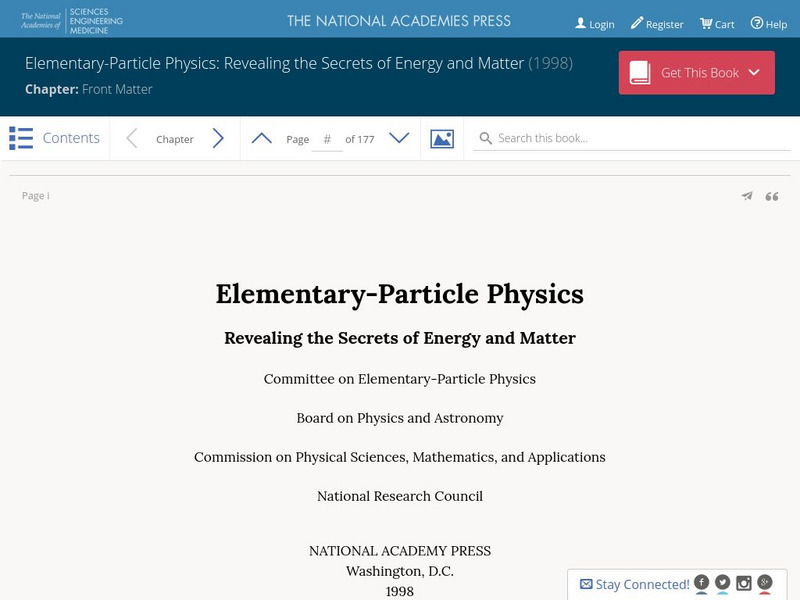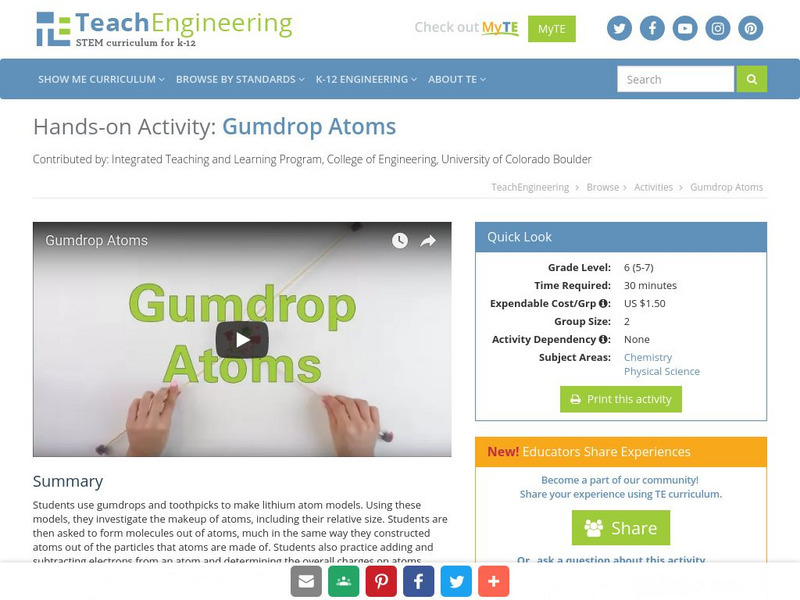Wikimedia
Wikipedia: Louis Victor De Broglie
A brief biography of Louis-Victor de Broglie, including a concise review of his studies.
Wikimedia
Wikipedia: Max Planck
Discover the life and accomplishments of the great German scientist Max Planck. This site also provides links to sites explaining theories and scientific terms that are associated with Planck.
Wikimedia
Wikipedia: Materia
Explore the concept of matter in this Spanish-language encyclopedia entry. This site features the properties of matter, the Law of Conservation of Matter, and other important features of matter.
Michigan State University
Michigan State University: Elementary Physics Ii: The Pauli Exclusion Principle
The Pauli Exclusion Principle requires that all electrons in an atom have unique energy levels.
PBS
Pbs: Planck Discovers the Quantum Nature of Energy
PBS offers a short summary of the discovery of the quantum nature of the atom by Max Planck. Easy to follow.
Lawrence Berkeley National Laboratory
Berkeley Lab: The Particle Adventure: Leptons
This particle physics tutorial discusses the different types of leptons: the electron, tau lepton, muon lepton, and neutrinos.
Other
Le Moyne College: Carriers of Negative Electricity
A transcript of J.J. Thomson's Nobel Lecture in Physics, December 11, 1906 on the electron.
Other
Erik's Chemistry Page: Electronic Structure of Atoms
A description of quantum theory, the Bohr model of the atom, the quantum mechanical atom, the Scrodinger equation, and quantum numbers.
Other
University of Kansas: Quarked!: Matter Mechanic
Build elements and molecules using neutrons, protons, and electrons. Choices include helium, carbon, oxygen, aluminum, water, and salt.
Other
Us: Valence Shell Electron Pair Repulsion (Vsepr)
An excellent tutorial that examines VSEPR and pairs of valence electrons. The valence shell electron pair repulsion concept is explored using animated models. Includes a VSEPR calculator. Use the toolbar on the left to navigate through...
Lawrence Berkeley National Laboratory
Berkeley Lab: La Aventura De Las Particulas
Learn the fundamentals of particles and forces with this site. Explore the paths that explain matter in the universe.
Dartmouth College
Dartmouth College: Chem Lab: Electrons in a Box
This site has an interactive component that allows you to change the mass, number of electrons and the length of the box and see how it affects the energy levels. Requires Java.
Sophia Learning
Sophia: Ionization Energy: Lesson 1
This lesson will define ionization energy. It is 1 of 3 in the series titled "Ionization Energy."
Sophia Learning
Sophia: Jj Thomson: Lesson 2
This lesson explains JJ Thomson's experiments that led to the discovery of the electron. It is 2 of 3 in the series titled "JJ Thomson."
Sophia Learning
Sophia: Subatomic Particles: Lesson 2
Describe the $ifference between the subatomic particles, including their masses, locations, and charges. This lesson is 2 of 7 in the series titled "Subatomic Particles."
National High Magnetic Field Laboratory
Magnet Academy: Timeline of Electricity and Magnetism: 1870 1879
The telephone and first practical incandescent light bulb are invented while the word "electron" enters the scientific lexicon.
American Chemical Society
Middle School Chemistry: The Periodic Table & Energy Level Models
Find out how energy level models are represented on the Periodic Table of Elements.
Famous Scientists
Famous Scientists: Wolfgang Ernst Pauli
Learn about the life and work of one of the pioneers of quantum physics, Wolfgang Ernst Pauli.
Other
National Research Council: Elementary Particle Physics
The Committee on Elementary-Particle Physics, part of the U.S. National Research Council, presents this massive report on particle physics. It's a definitive document. Surprisingly readable, totally detailed. Start with the Table of...
TeachEngineering
Teach Engineering: Gumdrop Atoms
In this activity, students make a model of a lithium atom using gumdrops and toothpicks. Using this model, they investigate the makeup of an atom, including its relative size. Students also practice adding and subtracting electrons from...
CK-12 Foundation
Ck 12: Chemistry: Atomic Nucleus
[Free Registration/Login may be required to access all resource tools.] Describes the modern concept of the atomic nucleus.
CK-12 Foundation
Ck 12: Chemistry: Cathode Ray Tube
[Free Registration/Login may be required to access all resource tools.] Covers the development of the first cathode ray tube.
CK-12 Foundation
Ck 12: Chemistry: Hydrogen and Alkali Metals
[Free Registration/Login may be required to access all resource tools.] Covers Group I elements, electron configuration, and reactivity.
CK-12 Foundation
Ck 12: Chemistry: Oil Drop Experiment
[Free Registration/Login may be required to access all resource tools.] Explains how Robert Millikan determined the charge of an electron.






